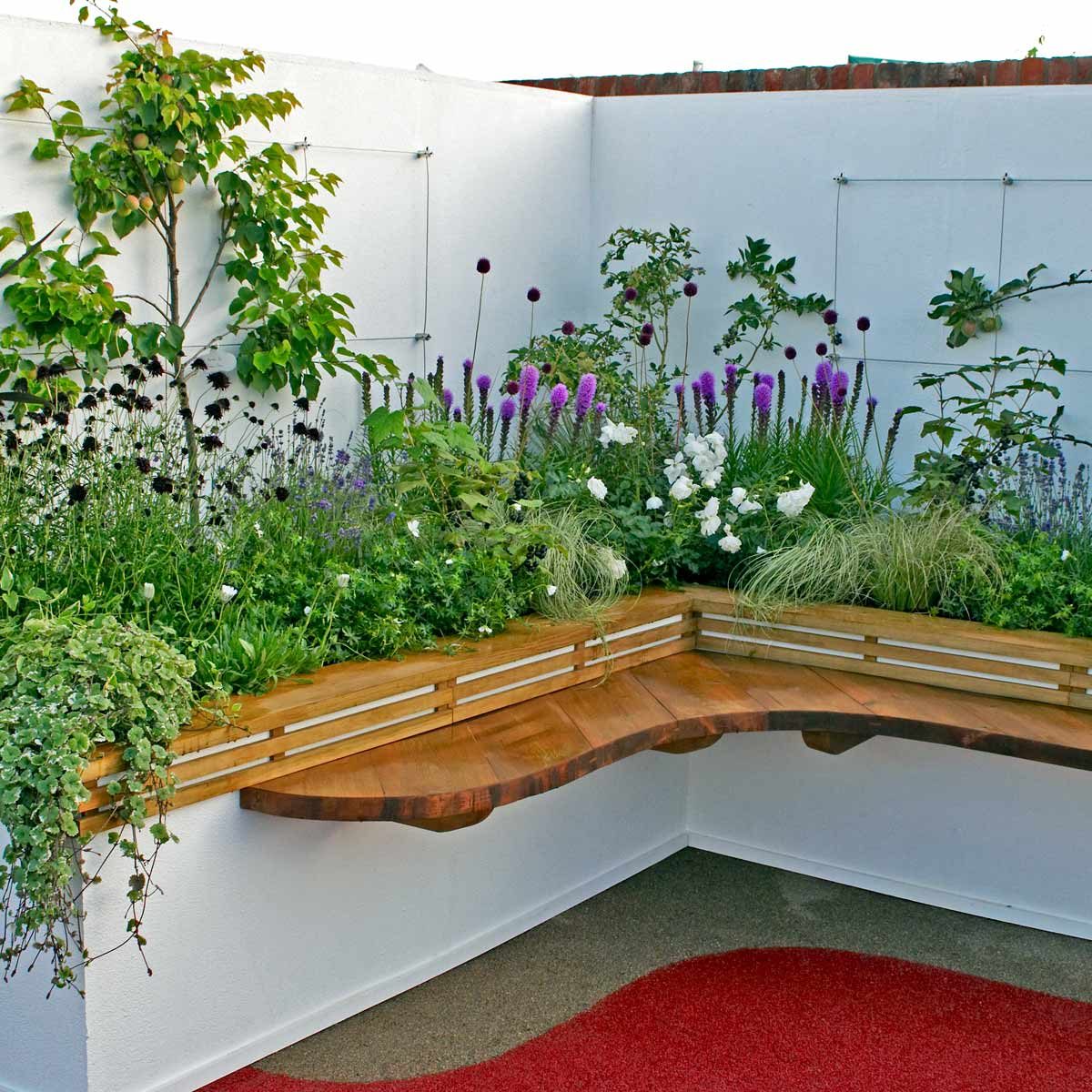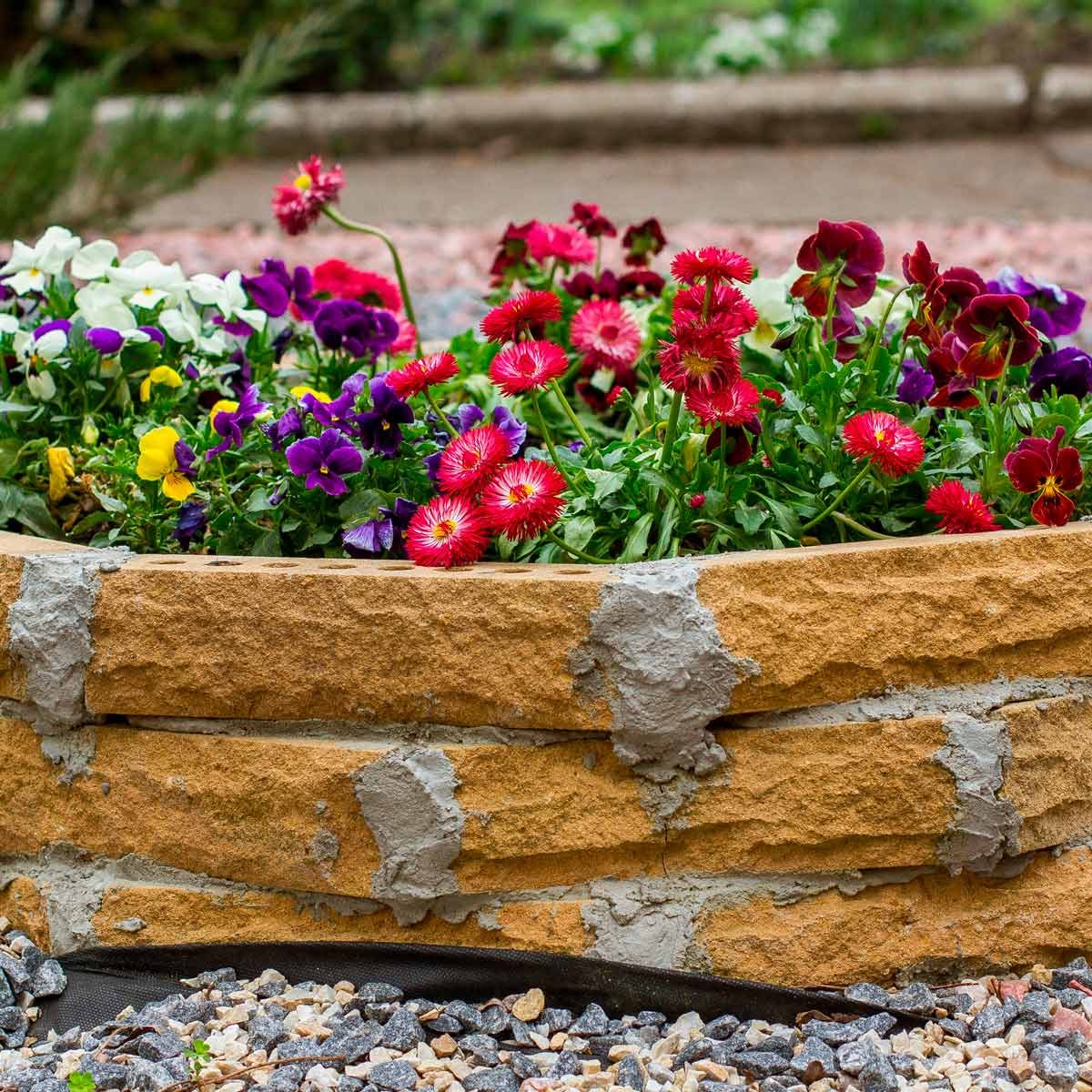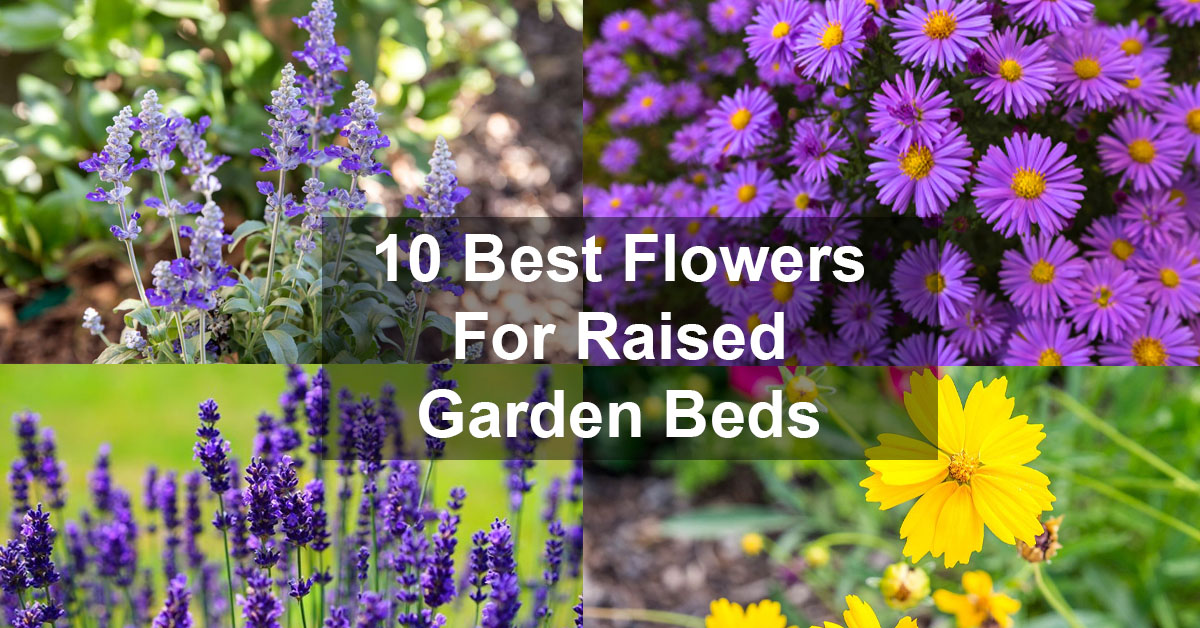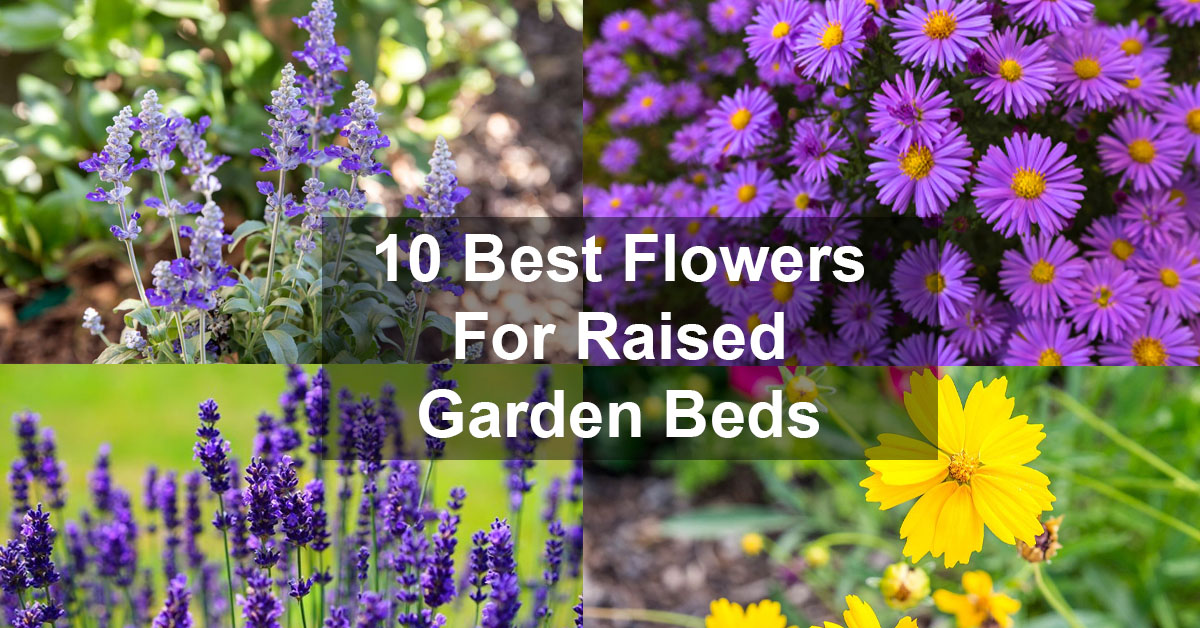The Worst Flower Choices for Raised Beds might sound like a gardening faux pas, but it’s a crucial topic for achieving a thriving and visually appealing raised bed. Choosing the right plants is vital for success, and certain species can wreak havoc on your carefully cultivated space.
From aggressive growth habits to shallow root systems, there are a number of plant characteristics that can lead to problems in raised beds. This article delves into the world of raised bed gardening, exploring the pitfalls of selecting the wrong plants and highlighting the key considerations to avoid common mistakes.
While raised beds offer a controlled environment for growing a variety of plants, certain species can thrive too well, overwhelming other plants and disrupting the overall aesthetic. Aggressive growth habits can quickly lead to overcrowding, while shallow roots can struggle to access essential nutrients and moisture.
Furthermore, the confined space of a raised bed can amplify disease and pest issues, making it important to choose plants that are resistant to common threats. Understanding the unique challenges posed by raised beds is essential for selecting the right plants and creating a flourishing garden.
Aggressive Growth Habits

Fast-growing plants can be problematic in raised beds, especially when their growth habits become aggressive and overpower other plants. Aggressive growth can lead to overcrowding, competition for resources, and an overall imbalance in the raised bed ecosystem.
While many flowers thrive in raised beds, some can attract unwanted pests, making them less than ideal choices. One such pest is the gnat, which can be a nuisance to both plants and gardeners. Fortunately, there are natural methods for controlling gnats, such as using diatomaceous earth or introducing beneficial insects.
How to Get Rid of Gnats in Plants Naturally can provide helpful tips and tricks for keeping these pesky insects at bay. Knowing which flowers attract gnats and employing effective pest control measures will help you enjoy a thriving and pest-free raised bed garden.
Examples of Invasive Plants
Some plants commonly found in raised beds are known for their aggressive growth habits and can quickly become invasive. Here are some examples:
- Mint:Mint is notorious for its fast-spreading rhizomes, which can quickly take over a raised bed. Its aggressive growth can choke out other plants and create a monoculture.
- Bamboo:Some bamboo species, like running bamboo, can spread rapidly through underground rhizomes. This can be problematic in raised beds as it can damage the bed’s structure and displace other plants.
- Morning Glory:Morning glory is a beautiful vine, but its rapid growth can quickly engulf other plants. Its seeds can also readily spread, making it difficult to control.
- Lemon Balm:While known for its medicinal properties, lemon balm can also become invasive. Its spreading rhizomes can quickly outcompete other plants in the raised bed.
Impact of Aggressive Growth
Aggressive growth habits can have a significant impact on the overall health and aesthetic of a raised bed. Here are some of the consequences:
- Competition for Resources:Aggressive plants can outcompete other plants for sunlight, water, and nutrients, leading to stunted growth or even death of other plants.
- Crowding:Overcrowding can create an environment that is unfavorable for the growth of other plants. It can also lead to increased disease and pest problems.
- Aesthetic Imbalance:Aggressive growth can disrupt the balance and harmony of a raised bed, making it appear cluttered and unorganized.
Shallow Root Systems
Raised beds offer a controlled environment for growing plants, but they can pose unique challenges for plants with shallow root systems. These plants may struggle to access sufficient moisture and nutrients, especially during periods of drought or high heat.
Shallow Roots and Soil Moisture
Plants with shallow roots are more susceptible to drought stress. Raised beds, with their limited soil volume, can dry out quickly, particularly during hot weather. The shallow roots may not reach the deeper, moister soil layers, leading to wilting and stunted growth.
Shallow Roots and Nutrient Availability
Shallow root systems can also hinder nutrient uptake. Nutrients in raised beds are typically concentrated in the top layer of soil. Plants with shallow roots may not be able to access the full range of nutrients available, potentially leading to nutrient deficiencies.
Examples of Plants with Shallow Root Systems
- Annuals:Many annual flowers, such as petunias, zinnias, and marigolds, have shallow root systems. They may require frequent watering and fertilization in raised beds.
- Herbs:Some herbs, including basil, oregano, and thyme, also have shallow roots. These herbs may need additional watering and fertilization, especially during dry periods.
- Vegetables:Certain vegetables, like lettuce, spinach, and radishes, are known for their shallow root systems. These vegetables may need regular watering and a rich, fertile soil to thrive in raised beds.
Water Requirements

Raised beds provide a controlled environment for gardening, but they also present unique challenges regarding water management. Understanding the water needs of different plants and the potential for waterlogging in raised beds is crucial for success.
Water requirements vary significantly among plants. Some species thrive in consistently moist soil, while others prefer drier conditions. The frequency and amount of watering depend on factors like plant type, soil type, climate, and container size.
Plants with High Water Demands
Certain plants are notorious for their high water needs. These plants may not be ideal for raised beds, especially if you lack a consistent watering schedule or live in a dry climate.
- Water-loving vegetables:Vegetables like cucumbers, zucchini, and tomatoes require consistent moisture to produce well. These plants may require daily watering in hot, dry weather, making them challenging to manage in raised beds.
- Ornamental plants:Some ornamental plants, such as hydrangeas and roses, have high water demands. While they can be grown in raised beds, they may require more frequent watering and potentially supplemental irrigation, especially during hot, dry periods.
- Herbs:While many herbs prefer well-drained soil, some, like mint and basil, require consistent moisture. These herbs may need frequent watering in raised beds, particularly during hot weather.
Waterlogging in Raised Beds
Waterlogging occurs when soil becomes saturated with water, preventing air circulation and root respiration. This can be a common problem in raised beds, especially if the soil is poorly draining or if the beds are overwatered.
While some flowers thrive in raised beds, others can attract unwanted pests, creating a less-than-ideal gardening experience. One such pest is the pesky gnat, often drawn to moist soil and decaying matter. If you’re battling a gnat infestation, check out this helpful guide on How to Get Rid of Gnats in Plants Without Harming the Environment for environmentally friendly solutions.
Once you’ve addressed the gnat issue, you can focus on selecting flowers that are both beautiful and pest-resistant for your raised beds.
Waterlogging can lead to several problems, including:
- Root rot:Excessive moisture creates an environment conducive to fungal diseases, leading to root rot and plant death.
- Nutrient deficiencies:Waterlogging can displace essential nutrients, making them less available to plants.
- Stunted growth:Lack of oxygen can inhibit root growth and overall plant development.
To prevent waterlogging in raised beds, choose well-draining soil, avoid overwatering, and ensure adequate drainage. Consider incorporating materials like gravel or perlite into the soil mix to improve drainage.
Disease and Pest Susceptibility
Raised beds, while offering numerous benefits, can also create an environment that increases the susceptibility of plants to diseases and pests. The confined space, limited soil volume, and often-intensified growing conditions can contribute to the spread and severity of plant problems.
Increased Vulnerability in Raised Beds
Raised beds, by their very nature, can make plants more susceptible to diseases and pests. This is due to a combination of factors, including:
- Concentrated Growth:Raised beds often have a higher density of plants, which can lead to increased competition for resources and create a more favorable environment for disease and pest outbreaks.
- Limited Soil Volume:The smaller soil volume in raised beds can result in faster depletion of nutrients and moisture, making plants more vulnerable to stress and disease.
- Improved Drainage:While good drainage is beneficial for plant growth, it can also lead to a faster drying of the soil, making it easier for pests and diseases to spread.
- Warm Microclimate:The raised bed structure can create a warmer microclimate, which can accelerate the growth of pests and diseases.
Examples of Susceptible Plants
Certain plants are particularly susceptible to diseases and pests when grown in raised beds. Some examples include:
- Tomatoes:Tomatoes are prone to a variety of diseases, including blight, wilt, and mosaic virus. The confined space and increased moisture in raised beds can create favorable conditions for these diseases to thrive.
- Roses:Roses are susceptible to pests such as aphids, spider mites, and Japanese beetles. The close proximity of plants in raised beds can make it easier for these pests to spread.
- Cucumbers:Cucumbers are prone to powdery mildew, a fungal disease that thrives in warm, humid conditions. The confined space and potential for increased humidity in raised beds can make cucumbers more susceptible to this disease.
Sunlight Requirements
Sunlight is a crucial factor in plant growth, and choosing the right plants for your raised bed depends on their specific sunlight needs. Some plants thrive in full sun, while others prefer partial shade or even full shade. Understanding the sunlight requirements of your chosen plants is essential for their successful growth and overall health.
Sunlight Exposure in Raised Beds, The Worst Flower Choices for Raised Beds
The location and orientation of your raised bed can significantly impact its sunlight exposure. Raised beds positioned on the south side of a building receive more sunlight than those on the north side. Similarly, beds facing east will receive morning sun, while those facing west will receive afternoon sun.
Consider the following factors when planning the placement of your raised bed:
- Sunlight Intensity:Full sun refers to at least six hours of direct sunlight daily, while partial shade indicates four to six hours, and full shade means less than four hours of direct sunlight. The intensity of sunlight can also vary throughout the day, with midday sun being the strongest.
- Sunlight Duration:The duration of sunlight exposure is another crucial factor. A raised bed positioned in a location with longer sunlight hours will receive more overall sunlight, which can be beneficial for sun-loving plants.
- Seasonal Variations:The amount of sunlight a raised bed receives can vary throughout the year. During the summer months, there are longer hours of daylight, while in winter, the hours of daylight are shorter. Consider these seasonal variations when choosing plants for your raised bed.
Challenges of Growing Shade-Loving Plants in Sunny Raised Beds
Growing shade-loving plants in a sunny raised bed can present several challenges:
- Scorching:Shade-loving plants are not adapted to intense sunlight and can easily get scorched, leading to leaf burn and wilting. The leaves of these plants are typically thinner and more delicate, making them susceptible to sun damage.
- Dehydration:Shade-loving plants have shallower root systems compared to sun-loving plants, making them less efficient at absorbing water from the soil. In a sunny raised bed, the soil can dry out quickly, leading to dehydration and wilting.
- Reduced Growth:Lack of shade can inhibit the growth of shade-loving plants. They may struggle to photosynthesize effectively and produce flowers or fruits. In extreme cases, they may even die.
Soil Type and pH Preferences: The Worst Flower Choices For Raised Beds

Raised beds offer a controlled environment for gardening, but understanding the soil requirements of your plants is crucial for success. The ideal soil for raised beds should be well-drained, fertile, and have a pH suitable for the plants you intend to grow.Raised beds are typically filled with a mixture of soil amendments, such as compost, manure, and peat moss, to improve soil structure and nutrient content.
However, some plants have specific soil type or pH preferences that may not be easily met in a typical raised bed environment.
Soil Types for Raised Beds
Raised beds provide the opportunity to create a customized soil environment that suits the needs of your plants. The ideal soil for raised beds is a well-drained, fertile loam, which is a balanced mixture of sand, silt, and clay.
This composition allows for good drainage, aeration, and water retention, creating an optimal environment for root growth.
Plants with Specific Soil Preferences
While a well-drained loam is suitable for many plants, some species have specific soil preferences that may require adjustments to the standard raised bed soil mix.
- Acid-loving plants, such as blueberries, azaleas, and rhododendrons, require a soil pH of 4.5 to 5.5. These plants struggle to thrive in alkaline soils, which can lead to nutrient deficiencies and stunted growth.
- Alkaline-loving plants, like asparagus, beans, and beets, prefer a soil pH of 6.0 to 7.0. These plants may develop nutrient deficiencies in acidic soils, resulting in poor growth and reduced yields.
- Plants with specific texture preferences, such as succulents and cacti, require well-draining soil to prevent root rot. They may not thrive in heavy clay soils found in some raised beds.
Amending Soil for Raised Beds
Amending the soil in raised beds is essential to create a suitable environment for a variety of plants.
- To lower soil pH, you can add acidic amendments like peat moss, sulfur, or aluminum sulfate.
- To raise soil pH, you can incorporate alkaline amendments such as lime, wood ash, or crushed limestone.
- To improve drainage, you can add sand, perlite, or vermiculite to the soil mix.
- To increase fertility, you can incorporate compost, manure, or other organic matter.
Maintenance and Care Considerations
The maintenance requirements of different plants can significantly impact the overall success and aesthetics of your raised beds. Some plants require minimal care, while others demand more attention, especially in terms of pruning, deadheading, or other specialized practices. Understanding the specific needs of your chosen plants is crucial for ensuring their health and maximizing their growth potential.
Plant-Specific Maintenance
- Pruning:Some plants, like roses, require regular pruning to maintain their shape and encourage flowering. Pruning helps to remove dead or diseased branches, improve air circulation, and stimulate new growth.
- Deadheading:Deadheading, the removal of spent blooms, is essential for many flowering plants. This practice encourages the plant to produce more flowers and prolongs the blooming period. Examples of plants that benefit from deadheading include zinnias, petunias, and marigolds.
- Staking and Support:Tall or vining plants, such as tomatoes or beans, may need staking or other support structures to prevent them from collapsing under their own weight. Providing adequate support ensures proper growth and prevents damage to the plants.
- Fertilization:Regular fertilization is crucial for maintaining healthy plant growth. The frequency and type of fertilizer will vary depending on the plant species and the nutrient content of your soil. Consult with a gardening expert or use a soil testing kit to determine the best fertilization plan for your raised beds.
- Pest and Disease Control:Regularly inspecting your plants for signs of pests or diseases is essential for early detection and treatment. Early intervention can help prevent widespread damage and ensure the health of your plants.
Raised Bed Size and Shape
The size and shape of your raised bed can significantly impact the ease of maintenance. For example, a narrow raised bed might be easier to reach for pruning and deadheading, while a wider bed might require more effort to reach the center.
Similarly, a square or rectangular bed can be more efficient for planting and weeding compared to a circular or irregular shape.
Closing Notes
By carefully considering factors like growth habits, root systems, water needs, disease susceptibility, and sunlight requirements, gardeners can select plants that will thrive in their raised beds. Avoiding these common pitfalls ensures a harmonious and visually appealing garden that flourishes for years to come.
Remember, a little research goes a long way in creating a successful raised bed, and choosing the right plants is the first step towards a vibrant and healthy garden.
FAQ Compilation
What are some common examples of invasive plants that should be avoided in raised beds?
Some common examples include mint, bamboo, and morning glory. These plants can spread rapidly and become difficult to control.
How can I amend soil to create a suitable environment for a variety of plants?
You can amend soil by adding compost, peat moss, or other organic matter to improve drainage, aeration, and nutrient content.
How can I prevent waterlogging in raised beds?
Ensure your raised beds have adequate drainage by using a well-draining soil mix and adding drainage holes to the bottom of the bed. Avoid overwatering and allow the soil to dry slightly between waterings.
